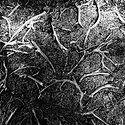Jarin Blaschke
Member
Hello:
I printed Lodima and Lupex today, in Amidol and an Ansco 130 variant. The results were surprising.
The image was an 8x10" negative of a Stouffer wedge, amed by contact printing the wedge onto FP4 film. It has a Pyrogallol stain (WD2D+).
The Amidol formula used was this:
Sodium Sulfite: 30g
Citric Acid: 3g
Benzotriazole, 1%: 40cc
Amidol: 10g
The 130 variant was Wimberley's from the Darkroom Cookbook (benzotriazole instead of Bromide).
I started with Lodima grade 4. I developed for 90 seconds in the amidol and 3 minutes in the 130. Firstly, 22 second exposure in the 130 roughly matches density to 30 seconds in Amidol. By counting steps on the wedge, the 130 has a little more contrast, between 1 and 2 less steps as far as contrast range. However, the big revelation is the almost shocking difference in Dmax. The Amidol has a much stronger black. In fact, the contrast may be nearly the same between developers, and the amidol just steps down two additional steps to reach its much richer black.
I was so surprised by the Dmax difference, I then developed another sheet in the 130 for five minutes. There was an overall very slight density shift darker, but the blacks were unimproved. Then, I discarded and remixed the 130 from scratch, to confirm that I did it right, only this time I shaved off 25% of the restrainer and upped the carbonate from 78 grams to 100 grams. The improvement in blacks were somewhat improved, but almost imperceptibly so. I printed another sheet to tone in selenium to see how much that improves it.
I then moved on to Lupex. Weirdly, the results were exactly the same as Lodima: density, contrast, color, everything. I can't see the difference between them. It's spookily suspicious, as Lupex and Lodima grade 4 were released around the same time. I will check again when the prints are dry...
Next time I will compare these silver chloride papers to enlarging papers in the same developers, as well as graded paper and VC paper and how they both respond to a tanned negative. I will also eventually send my results to my friend in New York who has a densitometer so I can post the graphs.
-Jarin
I printed Lodima and Lupex today, in Amidol and an Ansco 130 variant. The results were surprising.
The image was an 8x10" negative of a Stouffer wedge, amed by contact printing the wedge onto FP4 film. It has a Pyrogallol stain (WD2D+).
The Amidol formula used was this:
Sodium Sulfite: 30g
Citric Acid: 3g
Benzotriazole, 1%: 40cc
Amidol: 10g
The 130 variant was Wimberley's from the Darkroom Cookbook (benzotriazole instead of Bromide).
I started with Lodima grade 4. I developed for 90 seconds in the amidol and 3 minutes in the 130. Firstly, 22 second exposure in the 130 roughly matches density to 30 seconds in Amidol. By counting steps on the wedge, the 130 has a little more contrast, between 1 and 2 less steps as far as contrast range. However, the big revelation is the almost shocking difference in Dmax. The Amidol has a much stronger black. In fact, the contrast may be nearly the same between developers, and the amidol just steps down two additional steps to reach its much richer black.
I was so surprised by the Dmax difference, I then developed another sheet in the 130 for five minutes. There was an overall very slight density shift darker, but the blacks were unimproved. Then, I discarded and remixed the 130 from scratch, to confirm that I did it right, only this time I shaved off 25% of the restrainer and upped the carbonate from 78 grams to 100 grams. The improvement in blacks were somewhat improved, but almost imperceptibly so. I printed another sheet to tone in selenium to see how much that improves it.
I then moved on to Lupex. Weirdly, the results were exactly the same as Lodima: density, contrast, color, everything. I can't see the difference between them. It's spookily suspicious, as Lupex and Lodima grade 4 were released around the same time. I will check again when the prints are dry...
Next time I will compare these silver chloride papers to enlarging papers in the same developers, as well as graded paper and VC paper and how they both respond to a tanned negative. I will also eventually send my results to my friend in New York who has a densitometer so I can post the graphs.
-Jarin










